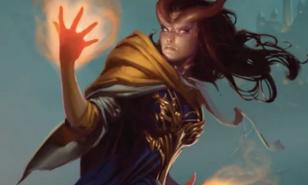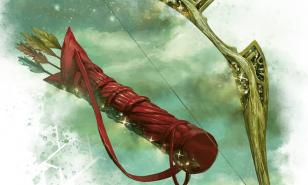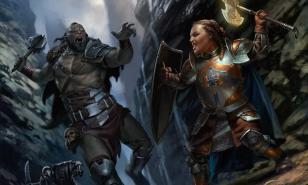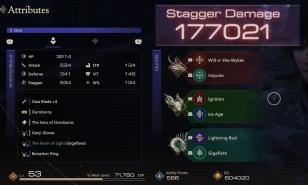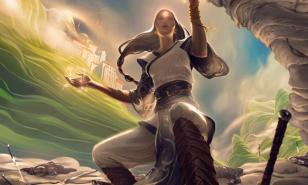[Top 5] D&D Best Monk Builds That Are Excellent
![[Top 5] D&D Best Monk Builds That Are Excellent](https://www.gamersdecide.com/sites/default/files/styles/news_images/public/screen_shot_2022-02-16_at_3.13.03_am.jpg)
Builds are a way to customize your characters that fits your personality and game style. Although each character class in DND already has a set amount of features built into them, you still have room for customization through subclasses, multiclassing, and feat selections.
Here are five really good and interesting builds you can do for your Monk.
5. The Grappler
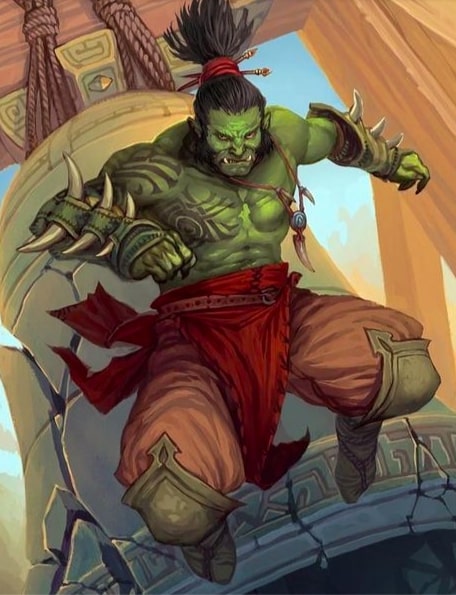
This is not something new already, but the origin story of a baby orc raised by monks is one of the best legendary background stories available for Dungeons and Dragons.
The Grappler has been tried several times in game tables ever since the first 5e book was published. But it is always sub-par because the damage dice for unarmed combat through the feat Tavern Brawler was just plain weak: a d4.
That all changed when Tasha’s Cauldron of Everything was released. The new book published a new Fighter Fighting Style: Unarmed Fighting.
So, let’s get to the build!
The Materials
Before we start building, let’s gather the materials needed:
- Half-Orc race
- Barbarian class
- Fighter class
- Monk class
- Tavern Brawler feat
- Grappler feat
The Build
Before we begin building, let’s remember first that the Monk class uses Dexterity as its primary ability for both offense and defense. It also uses Wisdom as its secondary ability for both its defense and ki abilities.
Next, let’s also remember that both Fighter and Barbarian uses Strength and Constitution as its primary abilities for both offense and defense, especially if you decide to use the Barbarian’s version of Unarmored Defense.
So, from here, we will have to make a decision: Strength or Dexterity?
Part One
The reason we are choosing Half-Orc as our race is because we are going for the Strength ability score.
The Half-Orc has a really big bonus to Strength (+2) and a good bonus to Constitution (+1). It also has the trait Relentless Endurance which prevents you from dying once per day. This will be a very good synergy to the Barbarian’s Rage ability which cuts all common damage types (slashing, piercing, bludgeoning) against you by half.
The Half-Orc also has the Savage Attacks trait which gives you an extra weapon dice when you score a critical hit. That’s also why we need to get three levels of Fighter in order to get the Champion subclass which has the Improved Critical feature which allows you to score a critical hit on a roll of 19 and 20.
Also, as a fun addition, the Half-Orc has the Menacing trait which lets you add the Intimidate skill for free. This can be used as a Bonus Action to taunt another enemy target after you mutilate an enemy. Imagine, blood splatters on your face and you face another target slowly and calmly and you beckon them to approach you. If you’re the enemy, either you accept the challenge or flee in terror.
Part Two
To create The Grappler effectively, the build requires you to use three classes: Monk, Fighter, and Barbarian.
So, what class should you start with?
You, the player, have two choices: either start with Barbarian and have Dexterity and Constitution as your secondary abilities, or start with Monk and have Dexterity and Wisdom.
But there’s a better choice: start with Fighter and ignore the Unarmored Defense and go for medium or heavy armors for better survivability.
From here, this guide will not specifically tell you what to do on what classes to take as you level up, but will tell you why these classes and its subclasses are crucial.
For Fighter, you need three levels. Aside from its game-breaking Action Surge feature, you need two other important features to complete The Grappler build.
First, is the Fighting Style: Unarmed Fighting which can be found in Tasha’s Cauldron of Everything. This is what The Grappler has been waiting for for years because before this, the only “good” option available was the feat Tavern Brawler. Unarmed Fighting allows the Fighter to have a damage dice of d8 if he chooses not to hold any shields or weapons in his hands. It also damages your grappled target for 1d4 FOR FREE once at the start of your turns.
Second, as explained above, is the Improved Critical of the Champion subclass so that it will synergize really well with your Half-Orc’s Savage Attacks trait.
For Barbarian, you only need a level. You can decide to reach level 3 to have a subclass, but there’s nothing that can add to the identity of a Grappler. So, the reason why you only need one level is simply for its Rage feature which will “synergize” with your Half-Orc ancestry as anger takes the better of you during combat.
For Monk, you need three levels. Aside from its Ki feature and its Flurry of Blows, what you are really after is the Way of the Open Hand’s Open Hand Technique, specifically the first option where you can knock the target of your Flurry of Blows prone. This will synergize really well with your grappling since prone creatures give your melee attacks Advantage.
For feats, you REALLY need these two: Tavern Brawler and Grappler. So, you will have to skip your Level 4 and 8’s ASI’s.
Although the 2nd and 3rd “benefits” of the Tavern Brawler feat will be useless most of the time, what you really need here is the 1st benefit which gives you a +1 to Strength, adding to your primary ability; and then, the 4th benefit, which is the most important feature for your Grappler character, always allows you to attempt a grapple attack as a Bonus Action each time you hit with an unarmed strike.
Then, the Grappler feat takes your grappling skills to the next level since it will always give you Advantage against your grappled target and also allows you to Restrain yourself and your target as an Action.
Now, imagine this scenario: You use your Monk’s Open Hand Technique to knock your target prone and then, immediately, you follow it up with your Tavern Brawler’s Bonus Action attempt to grapple. And since you have automatic Advantage against a prone creature, your grapple attempt will likely succeed. And this is the torturous part, since grappled targets lose all their movespeed and you need at least 15 movespeed to stand up, your target will have zero chance to stand up as long as you maintain the grapple.
If you can pull this successfully, your grappled target will suffer so much from you, especially since you can upgrade your Grapple into a Restrain and your Unarmed Fighting Style will always deal a free 1d4 damage once per round. Your other melee-oriented allies will also benefit from the Advantage given by the prone condition. And, finally, especially if your target is a medium-sized solo boss, this build will give your DM a massive headache.
The Verdict
The Grappler is a very dangerous character to play against, especially with its Prone-Grapple-Restrain-Free 1d4 damage per round combo. This is the fantasy equivalent of a UFC fighter.
The challenge here is to be careful with your ability scores since you will be tempted to go the Dexterity route and go full Kung-Fu Monk. But that is not the optimized road. Just focus on maximizing your Strength score and ignore the Barbarian and Monk’s Unarmored Defense features since wearing armor will never impede your grappling fighting style.
4. The Ninja
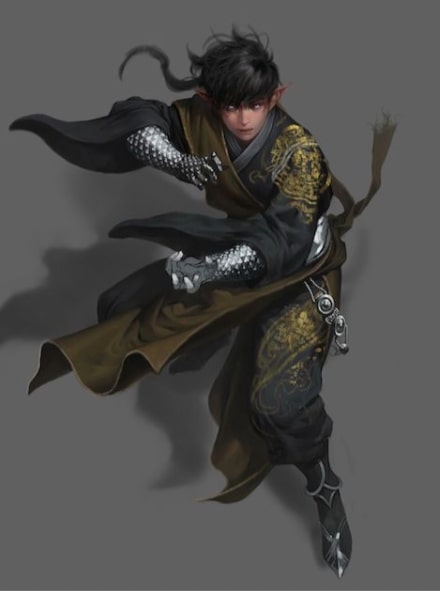
Elves are the definition of grace and perfection and the Wood Elves are the masters of stealth and hunt.
The Ninja is a mix of both the shadow monk and the rogue. And it is not that far-fetched if there’s a Wood Elf tribe out there who practices Ninjutsu and calls their ninja haven “Hidden Leaf Village.”
Let’s get to the build!
The Materials
First, let’s gather the materials needed for this build:
- Wood Elf race
- Monk class
- Rogue class
- Mobile Feat
- Elven Accuracy Feat
The Build
Building the Ninja is very easy since none of the two classes’ main abilities conflict against each other -- both use the Dexterity ability score.
Part One
The Wood Elf is the perfect candidate for the Ninja build. Aside from its perfect bonuses to Dexterity and Wisdom which the Monk and Rogue equally need, all of the Wood Elf traits contribute to the archetype:
- Darkvision is an obvious need for a Ninja since the warrior relies heavily on the veil of darkness to be effective.
- Fey Ancestry protects you from being charmed and put to sleep through magic.
- Trance allows you not to sleep at all, allowing you to be alert all the time.
- Keen Senses gives you the skill of Perception.
- Elf Weapon Training gives you proficiencies with the longsword, shortsword, shortbow, and longbow which are the perfect weapons for Ninjas.
- Fleet Foot increases your walking speed.
- And, finally, Mask of the Wild allows you to attempt to hide even when you are only lightly obscured, like being lightly covered by foliage, heavy rain, falling snow, or mist.
Part Two
Although, we can just make a Ninja with just a Monk or a Rogue, individually they really don’t capture the essence of a Ninja.
So, to start. You have two choices as to how you will spend your 1st level: Monk or Rogue.
If you go Monk, your Saving Throws are Strength and Dexterity but you can only have two starting skills. And the best choices are: Athletics, Acrobatics, and Stealth.
If you go the Rogue route, your Saving Throws are Dexterity and Intelligence and you can have four starting skills and a proficiency for Thieve’s Tools, too!
Clearly, starting with Rogue has more advantages. But, choosing Monk is acceptable.
From here, this guide will not specifically tell you what to do on what classes to take as you level up, but will tell you why these classes and its subclasses are crucial.
For Rogue, you need a lot of levels because you want to strengthen your Sneak Attacks. It is also a given that all of the Rogue features will be very useful to a Ninja.
For subclasses, you have the choice between Assassin or Thief. If you go Assassin, it is best to maximize your critical hits. So, getting the Elven Accuracy feat is a big plus to fish for natural 20’s. If you go Thief, you are far better at sneaking and climbing. So, you can’t go wrong with either choice.
For Monk, you need 6 levels and you must get the Way of the Shadow subclass to stay in the Ninja theme. Aside from the shadow magics you get from Shadow Arts at Level 3, you will also need the Extra Attack at Level 5 to give you more chances of hitting your target to activate Sneak Attack, knowing you also have Flurry of Blows if both attacks still miss. Then, finally, the feature we really “need” to complete the Ninja theme: Shadow Step, where you can teleport long distances as a bonus action as long as shadows exist. (Note: You can push for 11 levels of Monk if you want to get the Cloak of Shadows feature which lets you turn invisible as an action for free -- which is a very powerful feature).
For feats, you can choose to get Elven Accuracy and Mobile but these are now optional. As has been mentioned above, Elven Accuracy synergizes well with the Assassin subclass. And the Mobile feat is really good also to conserve your Bonus Action from using Cunning Action to Disengage since it freely allows you to move away after an attack, hit or miss, without triggering an Opportunity Attack.
The Verdict
The Ninja will always find a place in any adventuring party: it functions as a spy, an assassin, a thief, and as a scout. Focus on building your Dexterity score for maximum damage and defense and then your Wisdom score for Perception and Ki Powers.
3. The Weapon Master
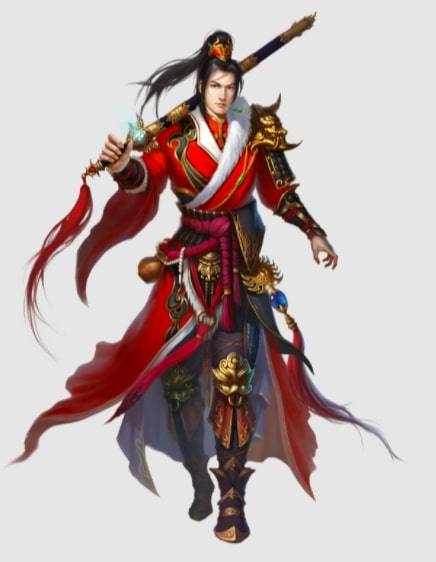
The Weapon Master has been a trope in fantasy for a long time. They are usually the mentors of a budding young hero, and they usually die right before the hero faces the main villain.
The Weapon Master is a mix of both monk and fighter. Although it can succeed using only either one of the classes, mixing the grace of the monk and the grit of the fighter perfectly creates this archetype who is both wise and experienced.
Let’s get to the build.
The Materials
We need the following materials:
- Variant human race
- Monk class
- Fighter class
- Lucky feat
- Mobile feat
The Build
The Weapon Master focuses on a, well, weapon. It’s usually a sword, but it can be another. Unlike the fighter who focuses on the mastery of combat and the monk who focuses on the mastery of the body and mind, the weapon master focuses on the poetry of the chosen weapon. This is why it makes total sense why the Kensei subclass of the monk has the Way of the Brush feature where they are trained with the calligrapher or painter’s supplies.
For Human, your goal is to place your bonuses on Dexterity and Wisdom since Strength will not be so useful for you. For your free skill, go for Acrobatics so that you can use it for some homebrew action to increase AC. For your free feat, either go for Mobile or Lucky. The Mobile feat allows you to be fluid in the battlefield, while the Lucky feat gives you three cheats a day.
For Monk, focus on reaching your Kensei subclass and add as many levels in this class as you like. The Way of the Kensei will be your defining feature for your Weapon Master archetype. Everything in this subclass will never be useless.
For Fighter, become a Battle Master to completely become the Weapon Master archetype. You may only need 3 or 4 levels as a Fighter, but never 5 or more. Focus your other levels in your Kensei monk levels. But just make sure to choose really good Battle Master Maneuvers so that you’ll be dancing on the battlefield.
The Verdict
The Weapon Master is a very versatile class. It can function as a secondary tank for your team, but the archetype really shines as a support tank and damager. Don’t forget to pump your Constitution score a little bit just to increase your survivability.
2. The Saiyan Warrior
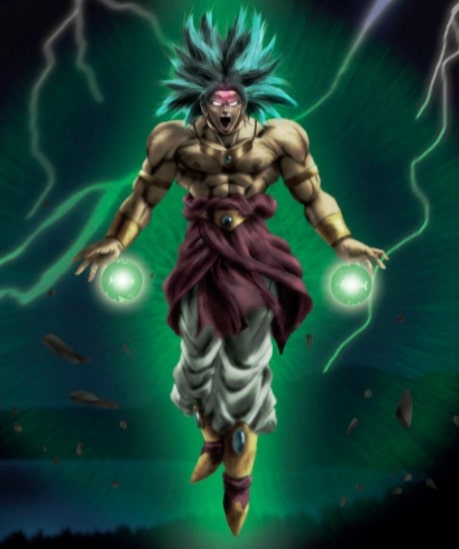
Dragon Ball Z and Son Goku have redefined the history of anime. Ever since they introduced the concept of changing one’s hair color and length every time they power up, newer generations of adventure anime follow the trope.
The Saiyan Warrior is an attempt at mixing the Sun Soul Monk with Aasimar to emulate the Super Saiyan hair change.
Let’s get to the build.
The Materials
We need the following materials:
- Protector Aasimar race
- Monk class
- Alert feat
The Build
The Protector Aasimar does not greatly help with the Saiyan Warrior build because, obviously, Aasimars have a racial +2 to Charisma which is very useless for a monk. The good news is that the official rules have changed because of Tasha’s, and now, we can change the +2 bonus to increase our Dexterity instead.
For Aasimar, using Tasha’s new rule, ignore your +2 to Charisma and shift it to Dexterity. Then leave the +1 to Wisdom as is since monks need those. The reason we’re choosing the Protector Aasimar is because of its Radiant Soul trait which is everything you need to become a Super Saiyan: Flight, Increased Damage, and Divine Aura (which translates to Golden Hair).
For Monk, choose Sun Soul as your subclass since everything in that subclass is literally Super Saiyan: Need a Kame-Kame-Ha? Level 6 Searing Arc Strike or Level 11 Searing Sunburst will do the work for you. And, as a Protector Aasimar you can easily transform into a Super Saiyan and fly.
For Feats, the Alert feat does make sense if you take it since you have heightened senses and you act faster compared to a normal being.
The Verdict
Fortunately, building the Saiyan Warrior is simple now (greatly because of Tasha’s Cauldron of Everything). If it wasn’t for this book, it would have been more difficult since the Aasimar’s bonuses to ability scores, especially Charisma, is very useless to a monk. The “safest” way to achieve the build would have been to multiclass into a Barbarian and try to balance your ability scores since Barbarian’s benefit from Strength and Constitution, also making your entire ability scores very weak since it’s so thinly spread.
1. The Sifu
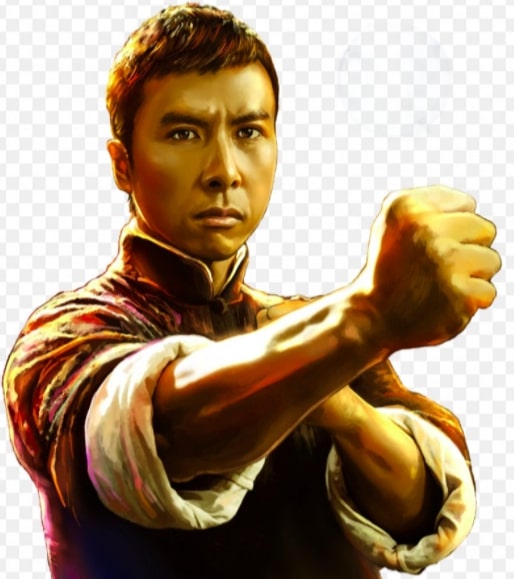
The Sifu, or The Master, much like the Weapon Master, is the epitome of Kung-Fu. Like Ip Man, people from all over the world will travel just to be trained under The Sifu.
The Sifu is a revisit of the Open Hand Monk with two or three levels in Fighter. The goal here is to emulate the likes of Ip Man, especially when he does his Wing-Chun Punch.
Let’s get to the build.
The Materials
We need the following materials:
- Variant Human race
- Monk class
- Fighter class
- Mobile feat
The Build
The Variant Human is good for this build. Although, any race can become a Shifu, the goal of this build is to build “Ip Man”. And, since he’s a human, it’s an obvious choice. For it’s free Feat, a good choice is Mobile since there are no other feats that would fit this archetype much better.
For Monk, we are going to choose the Way of the Open Hand. The goal here is to stay as “magic-less” as much as possible and Open Hand, Drunken Master, and Kensei are the closest things to “no magic”. In this build, we will go for Open Hand because we want to achieve Ip Man’s lightning-fast fists.
For Fighter, you just need two levels until you get Action Surge because this feature allows you to do the “Wing-Chun Punch” when you do your Flurry of Blows in quick succession. For Fighting Style, instead of choosing Unarmed Fighting (which heavily leans towards grappling), maybe you can choose the Interception style instead which makes total sense since you’re going to protect your “students” from harm as much as possible, and the style allows your fists for the intercepting.
The Verdict
The Shifu is a pretty straightforward and optimized build to have for any monk player. Just be sure to maximize your Open Hand features, especially your Open Hand Techniques which incapacitates your enemies.
Closing
What do you think of the suggested builds? Are they worth a try?
Let us know in the comments!
You may also be interested in:
- The Best D&D Classes (Ranked from Worst to Best)
- Top 25 Best D&D Villains of All Time
- 32 Most Interesting Facts About Dungeons and Dragons!
- 25 Best D&D Games for PC That Every Fan Must Play!
- The 10 Best DnD Streams
- Most Powerful D&D Dragons For Adventurers To Defeat
- Top 10 Best DnD Campaign Ideas
- Top 5 DnD Most Useful Languages
- D&D Top 10 Most Damaging Spells That Obliterate Foes
- Top 15 Most Powerful D&D Spells
- The Best D&D Race for Every Class
- Top 10 D&D Best Quests That Are Amazing
- Top 10 D&D Best Utility Spells
- [Top 10] D&D Best Zombies
- [Top 10] D&D Best Simple Weapons For Killing Foes
- [Top 10] D&D Best YouTube Channels
- [Top 5] D&D Best Tank Builds That Can Withstand Massive Damage
- Log in or register to post comments
 Home
Home PC Game Trailers
PC Game Trailers News
News Menu
Menu


![[Top 10] D&D Best Monk Feats Revealed](https://www.gamersdecide.com/sites/default/files/styles/308x185-scale-crop--more-top-stories/public/screen_shot_2022-02-16_at_4.01.15_am.jpg)
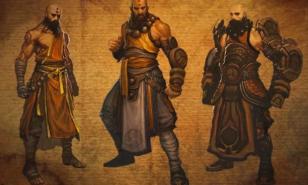
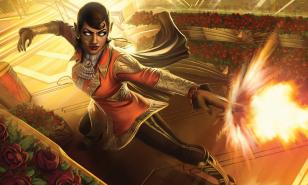
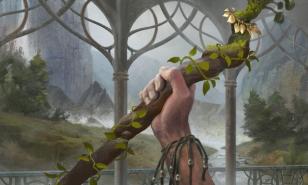

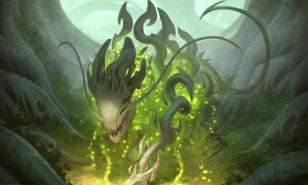

![[Top 3] D&D Best Monk Subclasses To Play](https://www.gamersdecide.com/sites/default/files/styles/308x185-scale-crop--more-top-stories/public/screen_shot_2022-02-11_at_12.25.31_am.jpg)
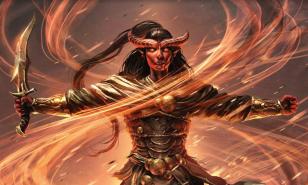
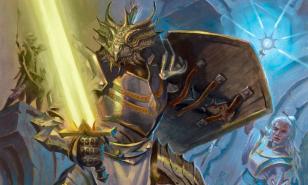

![[Top 10] D&D Best Barbarian Feats Revealed](https://www.gamersdecide.com/sites/default/files/styles/308x185-scale-crop--more-top-stories/public/screen_shot_2022-02-17_at_12.17.13_am.jpg)

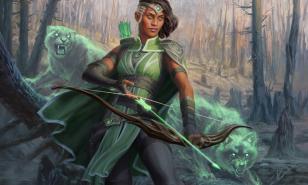
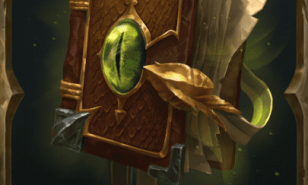
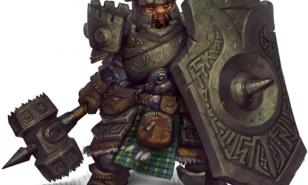
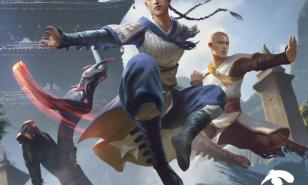
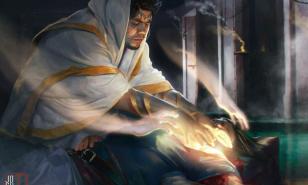
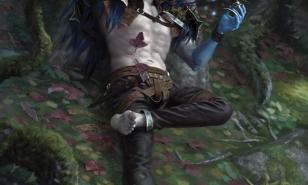

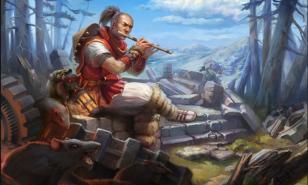

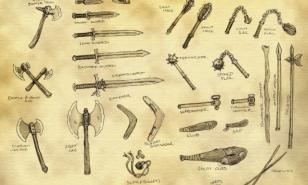
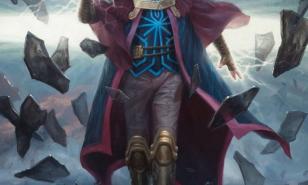
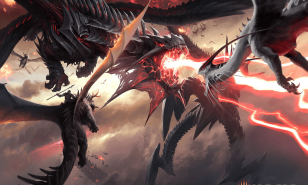
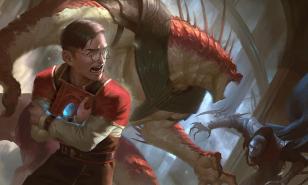

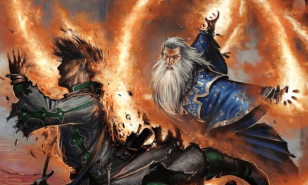
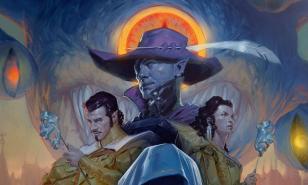
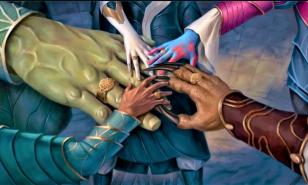
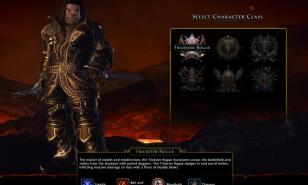

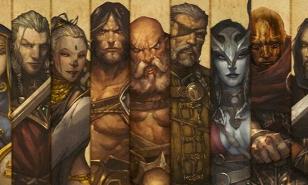
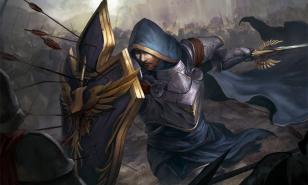

![[Top 25] Best D&D Spells Every Party Should Have [Top 25] Best D&D Spells Every Party Should Have](https://www.gamersdecide.com/sites/default/files/styles/308x185-scale-crop--more-top-stories/public/top_25_best_d_d_spells_every_party_should_have_cover.jpg)


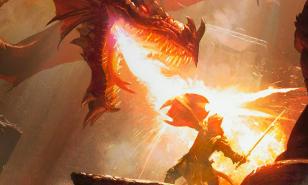
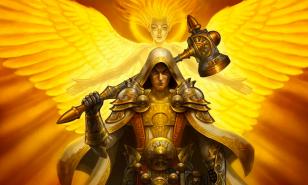
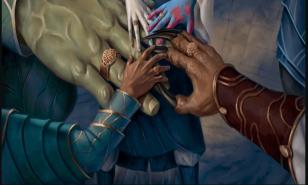
![[Top 11] D&D Best Paladin Multiclass That Are Fun Strong Stern Paladin (Image credit: 中秋快乐~)](https://www.gamersdecide.com/sites/default/files/styles/308x185-scale-crop--more-top-stories/public/image_2023-02-04_114652751.png)
![[Top 5] D&D Best Rogue Multiclass Builds That Are Powerful D&D Best Rogue Builds](https://www.gamersdecide.com/sites/default/files/styles/308x185-scale-crop--more-top-stories/public/top_5_dd_rogue_multiclass_builds_that_are_powerful_rogue_1.jpg)
